Are you looking for an exciting attraction to visit in Singapore? Look no further than the Peranakan Museum! This museum is dedicated to showcasing the unique culture of the Peranakan people in Singapore and Southeast Asia.

As you explore the museum, you’ll learn about the fascinating history and traditions of the Peranakan community. The museum’s exhibits cover a range of topics, from the Peranakan’s distinctive clothing and jewellery to their food, language, and beliefs. You’ll also discover how the Peranakan culture has evolved over time and how it continues to influence modern-day Singaporean society.
Whether you’re a history buff, a culture enthusiast, or simply looking for an exciting and educational experience in Singapore, the Peranakan Museum is not to be missed. So why not plan a visit today and immerse yourself in the rich and vibrant world of the Peranakan people?
1 Min Read
Love history and culture? Look no further than the Peranakan Museum in Singapore! Dive into the fascinating world of the Peranakans, a unique ethnic group with a blend of Chinese, Malay, and other Southeast Asian influences. Explore stunning exhibits showcasing their fashion, food, beliefs, and traditions.
This museum is a must-visit for anyone interested in:
- Unique Culture: Discover the rich heritage of the Peranakans through interactive displays and exquisite artefacts.
- Beautiful Crafts: Marvel at intricate beadwork, embroidery, and batik, traditional Peranakan crafts.
- Fusion Cuisine: Learn about Peranakan cuisine, a blend of Chinese and Malay flavours, and plan your foodie adventure later!
Whether you’re a history buff or simply curious, the Peranakan Museum promises an exciting and educational experience in Singapore. Don’t miss it!
Exploring the Peranakan Museum
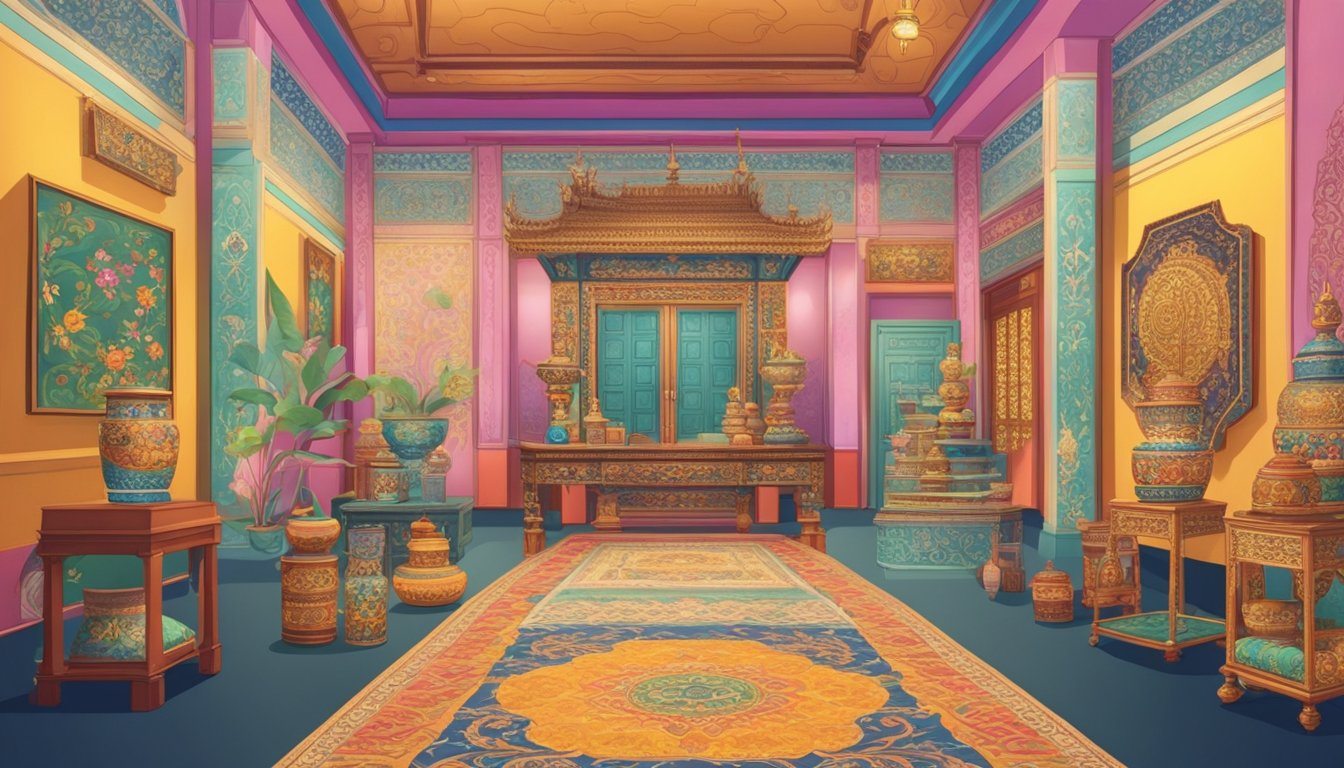
If you’re looking for an exciting attraction that offers a journey through history, the Peranakan Museum is a must-visit. As you walk through the museum, you’ll discover the rich heritage of the Peranakans, also known as the Nyonya and Baba community.
A Journey Through History
The Peranakans are a unique ethnic group that emerged from the intermarriage between the Malay and Chinese communities in the 15th century. The museum tells their story through a series of exhibits that showcase their tradition, culture, and history.
As you explore the museum, you’ll learn about the Peranakans’ traditional way of life, including their customs, beliefs, and practices. You’ll also discover the different types of clothing that they wore, such as the elegant kebaya, which is a traditional blouse worn by Peranakan women.
Exquisite Galleries and Exhibits
The Peranakan Museum boasts a collection of over 1,000 artefacts that showcase the Peranakans’ unique culture and tradition. The galleries are filled with exquisite exhibits that feature intricate beadwork, embroidery, and batik, which are all traditional Peranakan crafts.
One of the highlights of the museum is the Straits Chinese Jewellery Gallery, which features a stunning collection of gold and silver jewellery that was worn by Peranakan women. The gallery also showcases the different types of jewellery that were worn for different occasions, such as weddings and funerals.
Cultural Significance of Peranakan Heritage
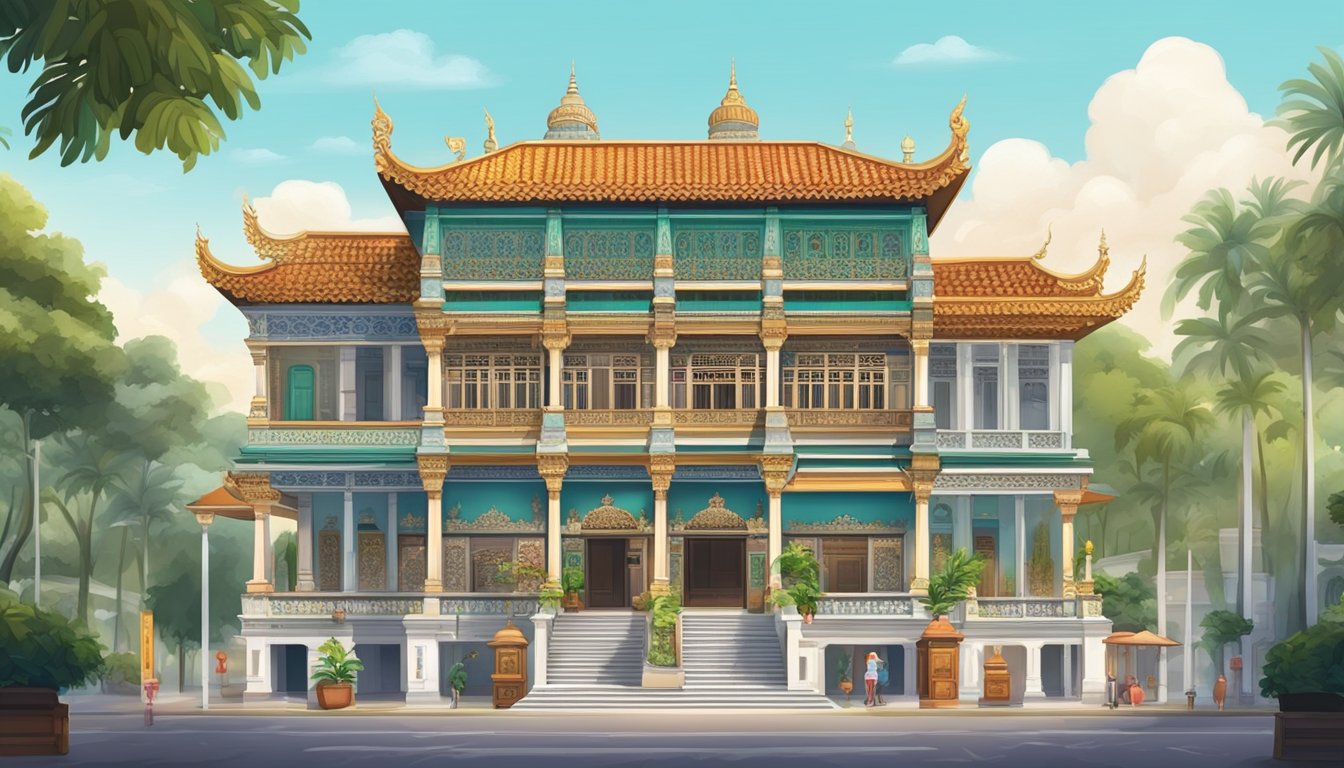
If you are interested in exploring the rich cultural heritage of Southeast Asia, a visit to the Peranakan Museum in Singapore is a must. The museum is dedicated to showcasing the unique and fascinating Peranakan culture, which is a blend of Chinese, Malay, and other Southeast Asian influences.
Peranakan Culture and Traditions
The Peranakan culture is steeped in tradition and values that have been passed down through generations. The term “Peranakan” refers to the descendants of Chinese immigrants who settled in the Malay archipelago and adopted many of the local customs and traditions. The Nyonyas, or Peranakan women, are particularly known for their intricate beadwork and embroidery, which are showcased in the museum’s exhibits.
One of the most distinctive aspects of Peranakan culture is the cuisine, which is a fusion of Chinese and Malay flavours. Peranakan cuisine is known for its complex flavours and use of spices, and is a must-try for foodies visiting the region.
Influence on Southeast Asian Society
The Peranakan culture has had a significant influence on Southeast Asian society, particularly in Malaysia, Indonesia, and Singapore. Peranakan traditions and values have been incorporated into the broader cultural landscape of the region, and have helped to shape the unique identity of Southeast Asia.
The Peranakan Museum is a fascinating exploration of this rich cultural heritage, and offers visitors a chance to learn more about the history, traditions, and values of the Peranakan people. Whether you are a history buff, a foodie, or simply curious about the world around you, the Peranakan Museum is a must-visit destination in Singapore.
Architectural Marvels of the Peranakan Home
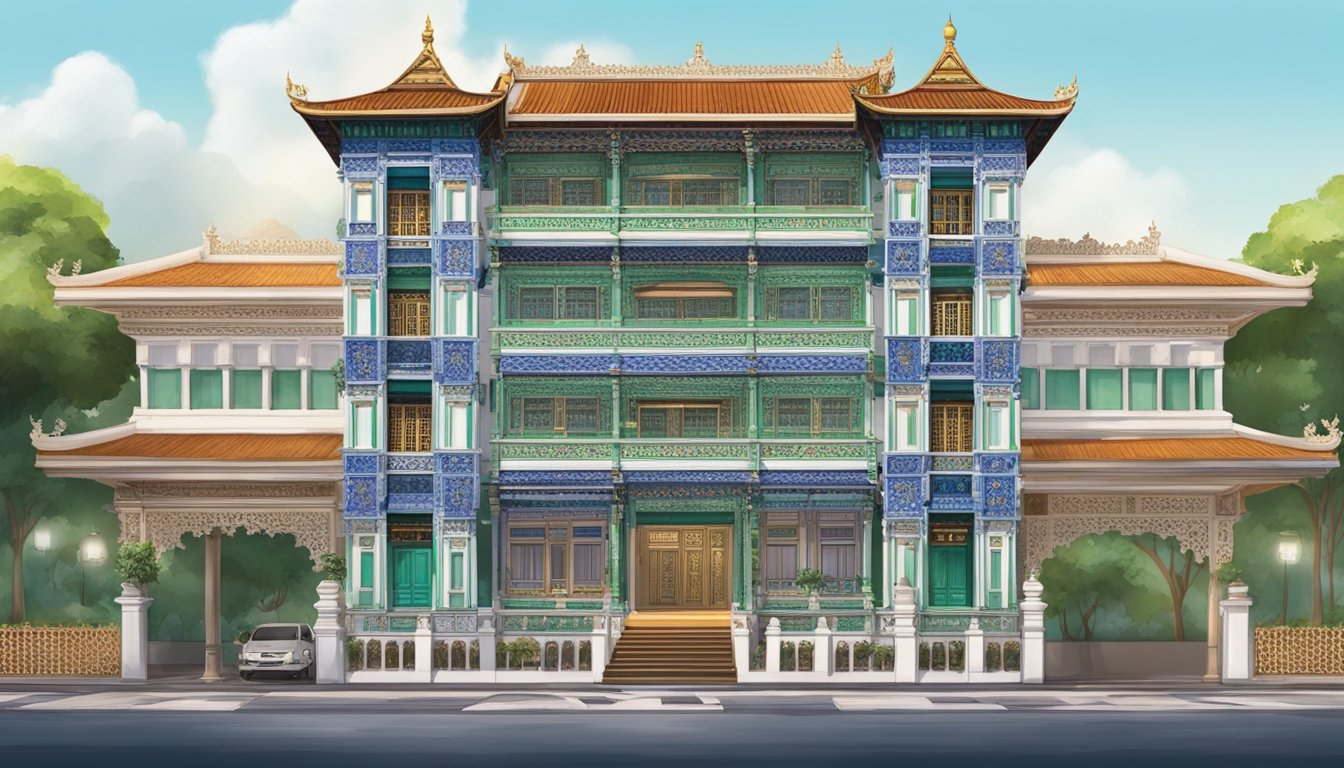
If you’re a fan of architecture and heritage, the Peranakan Museum is a must-visit attraction. The museum is housed in a stunning building that was once the Tao Nan School, a school for Chinese immigrants. The building itself is an architectural marvel, with its intricate carvings and ornate decorations.
The Peranakan Home Museum Experience
As you explore the museum, you’ll get a glimpse into the world of the Peranakan people, who were a unique blend of Chinese, Malay, and European cultures. One of the highlights of the museum is the Peranakan Home, a recreation of a typical Peranakan house from the 1920s. The house is filled with authentic furniture, antiques, and artefacts, giving you a sense of what life was like for the Peranakan people.
Design and Aesthetics
The Peranakan Home Museum is not just a historical artefact, but also a testament to the design and aesthetics of the Peranakan people. The Peranakan people were known for their love of vibrant colours and intricate patterns, which are reflected in the design of the house. You’ll see intricate carvings on the furniture, colourful tiles on the walls, and beautiful embroidery on the clothing.
One of the most fascinating aspects of the Peranakan Home is the way that it blends different cultural influences. You’ll see Chinese-style furniture alongside European-style chandeliers, and Malay-style textiles alongside Chinese-style ceramics. The result is a unique and beautiful fusion of cultures that is truly one-of-a-kind.
Interactive Programmes and Activities
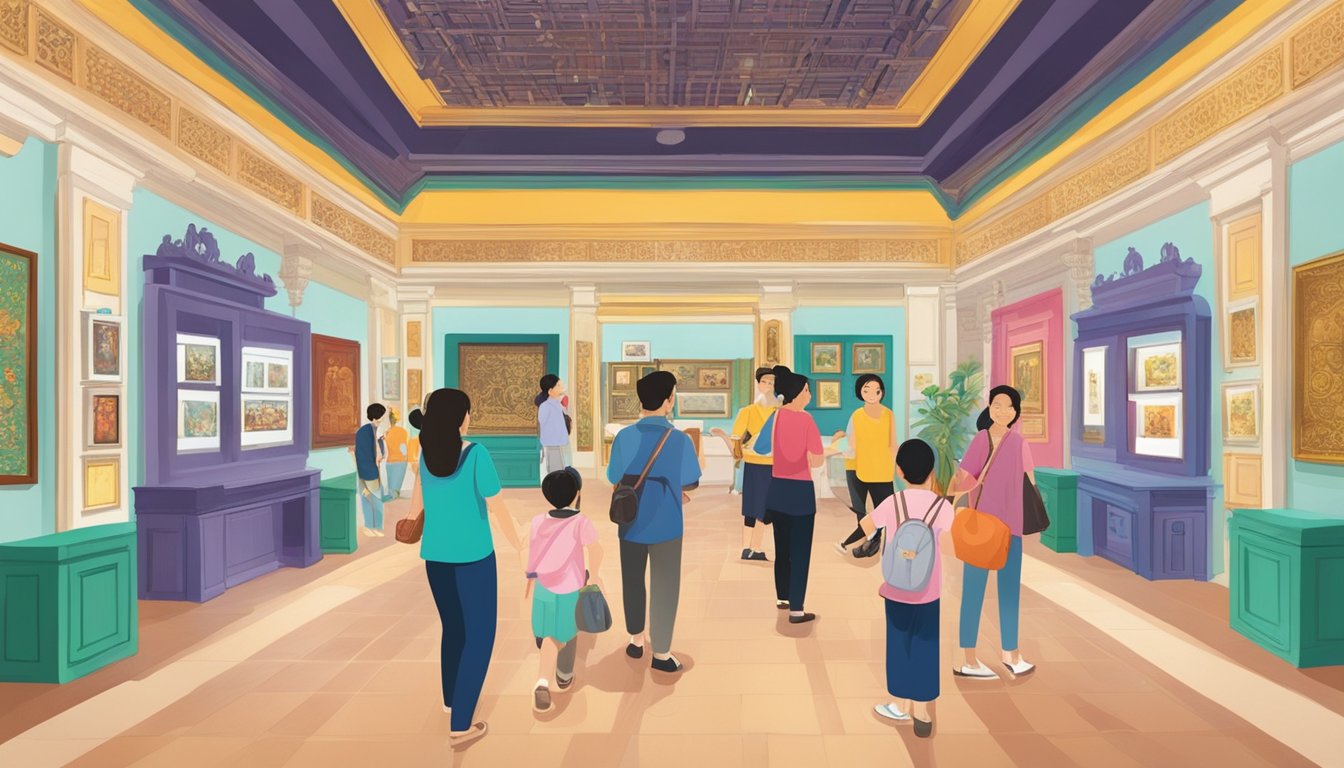
When you visit the Peranakan Museum, you will have the opportunity to participate in interactive programmes and activities that will help you better understand the culture and traditions of the Peranakan people.
Engaging Workshops and Talks
The museum offers a range of workshops and talks that are designed to be both informative and engaging. These workshops cover various aspects of Peranakan culture, including batik, beadwork, and embroidery, and are led by experts in the field.
During these workshops, you will have the opportunity to learn about the techniques and tools used in Peranakan art forms, as well as the cultural significance of these art forms. You will also have the chance to create your own Peranakan-inspired artwork, using the techniques and tools that you have learned.
In addition to these workshops, the museum also hosts talks on various topics related to Peranakan culture. These talks are led by experts in the field and cover a range of topics, from the history of the Peranakan people to the role of women in Peranakan society.
Attending these workshops and talks is a great way to deepen your understanding of Peranakan culture and traditions. Whether you are a history buff, an art lover, or simply curious about the Peranakan way of life, these programmes are sure to leave you feeling excited and inspired.
Celebrating Festivities at the Museum
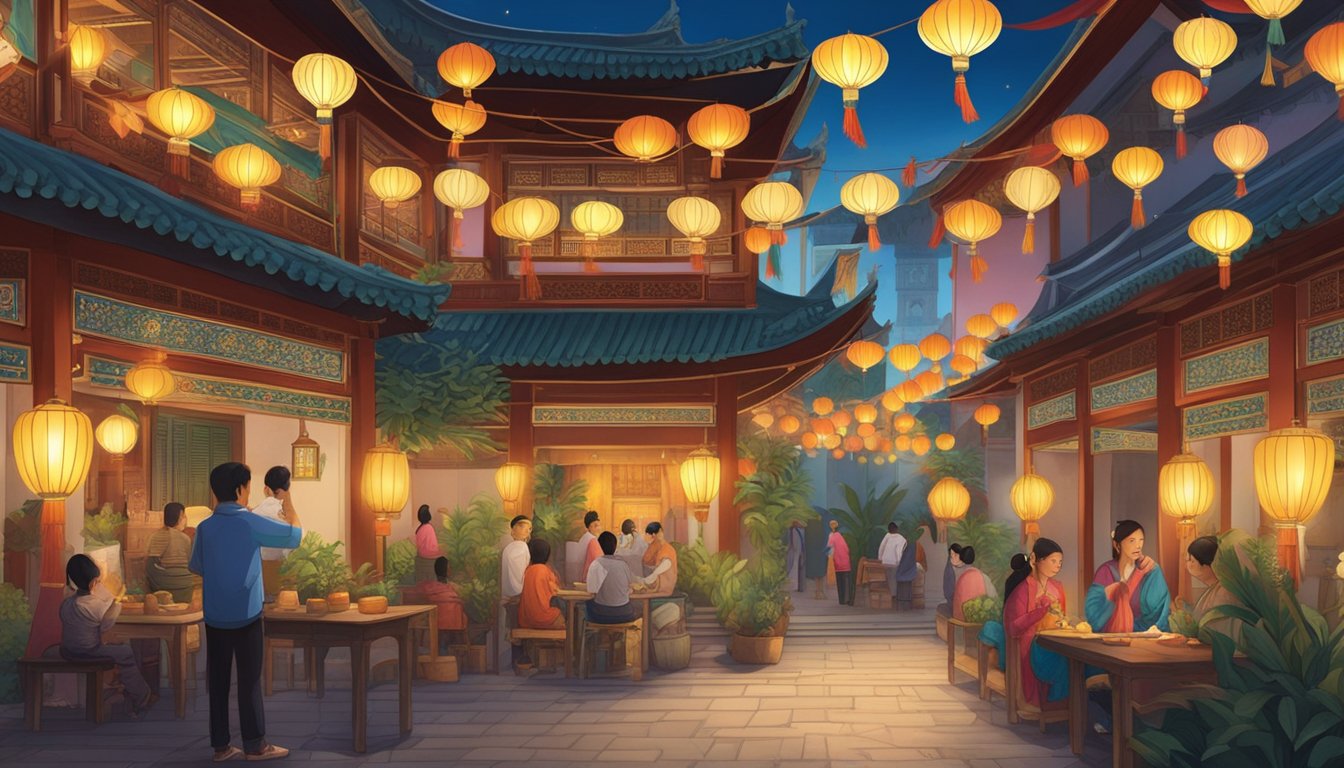
If you’re looking for an exciting way to celebrate the festive season, look no further than the Peranakan Museum. This museum is an excellent place to learn about the rich heritage and culture of the Peranakan community, and it’s also a great place to celebrate festivals and traditions throughout the year.
Chinese New Year Celebrations
Chinese New Year is a major celebration in Singapore, and the Peranakan Museum is the perfect place to experience the festivities. During this time, the museum is decorated with traditional Chinese New Year decorations, including lanterns, red banners, and auspicious symbols.
You can also enjoy a range of activities and events during Chinese New Year at the Peranakan Museum. These might include traditional lion dance performances, tea ceremonies, and workshops on Peranakan culture and traditions.
Annual Peranakan Festivals
In addition to Chinese New Year, the Peranakan Museum also celebrates a range of other festivals throughout the year. These might include the annual Peranakan Festival, which showcases the unique food, art, and culture of the Peranakan community.
During the festival, you can enjoy a range of activities and events, including traditional dance performances, cooking workshops, and exhibitions of Peranakan artefacts. You might also have the chance to taste traditional Peranakan dishes, such as Nyonya laksa or kueh pie tee.
Whether you’re interested in Peranakan culture, tradition, or simply want to celebrate a festival in style, the Peranakan Museum is an excellent choice. With its exciting events, engaging exhibitions, and rich heritage, it’s the perfect place to learn, explore, and celebrate.
Unveiling the Rich Tapestry of Peranakan Culture: Explore the Peranakan Museum!
History buffs and culture enthusiasts, rejoice! The Peranakan Museum in Singapore offers a captivating journey through the unique heritage of the Peranakan people. This museum unveils a fascinating blend of Chinese, Malay, and other Southeast Asian influences, creating a truly one-of-a-kind cultural experience.
The Museum Gift Shop
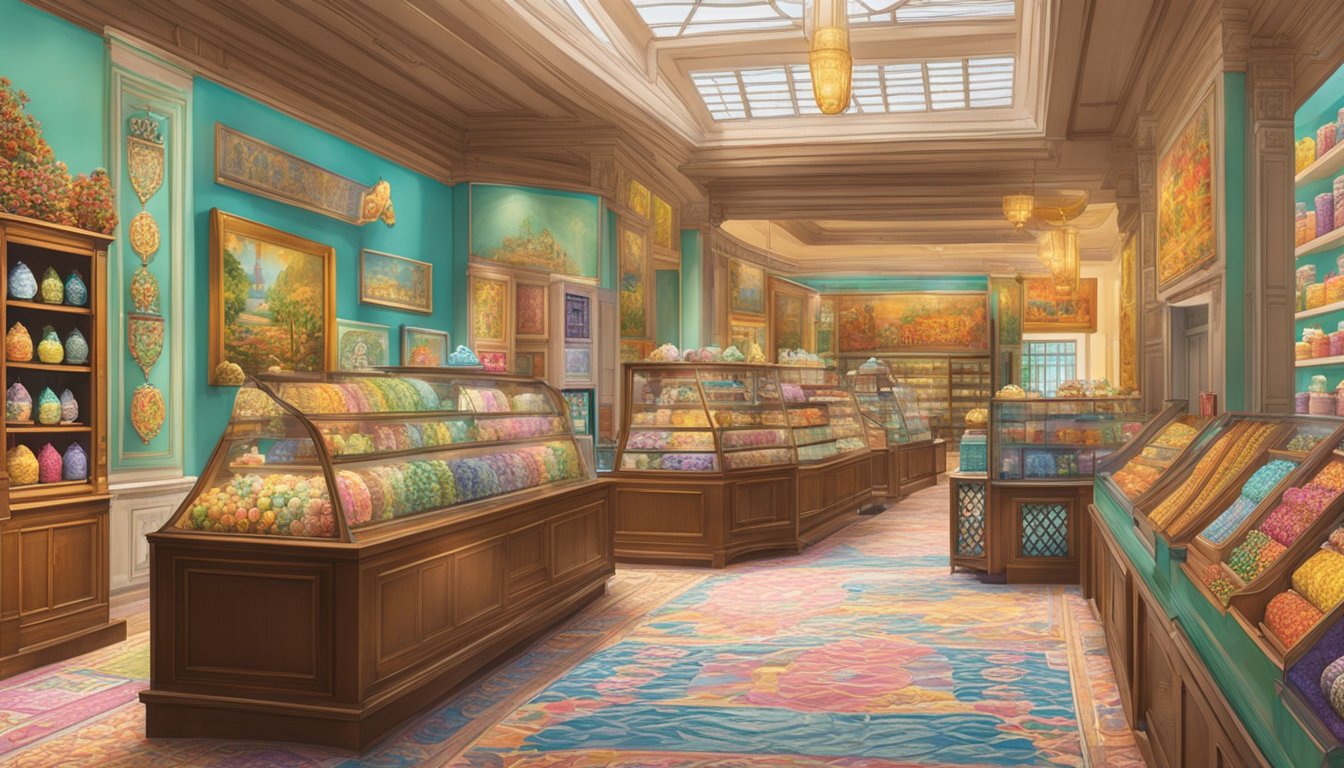
After exploring the Peranakan Museum, you can take a piece of Peranakan heritage home with you by visiting the museum gift shop. The gift shop is located at the entrance of the museum and offers a wide range of souvenirs and traditional wares.
Souvenirs and Traditional Wares
The gift shop has an array of souvenirs that are perfect for commemorating your visit to the museum. You can purchase postcards, magnets, and keychains featuring intricate beadwork and embroidery, as well as books and DVDs about Peranakan culture.
For those looking for something more unique, the gift shop also offers a selection of traditional Peranakan wares. You can purchase beautiful kebaya, a traditional blouse worn by Peranakan women, which are available in a variety of colours and designs. Additionally, the shop has a range of beadwork jewellery, including necklaces, bracelets, and earrings, which are all handmade by local artisans.
If you’re looking for a gift for someone special, the gift shop also has a selection of exclusive items that are not available anywhere else. These include Peranakan-inspired homeware such as tea sets, tablecloths, and cushion covers, all of which feature intricate designs and patterns that are unique to the Peranakan culture.
Prominent Figures in Peranakan History
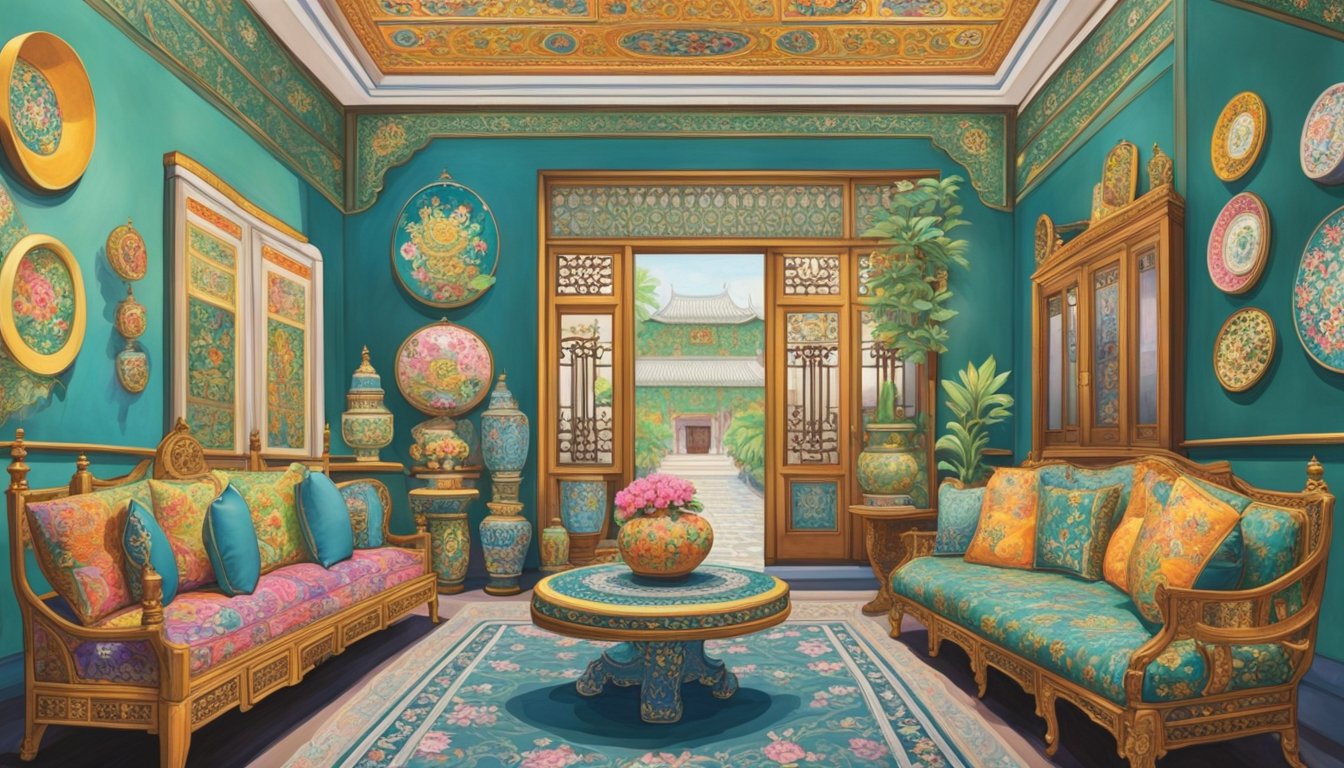
Peranakan culture is rich with history and tradition, and it is shaped by many influential personalities. In this section, we will explore some of the most prominent figures in Peranakan history.
Influential Personalities
Peter Wee
One of the most notable figures in Peranakan history is Peter Wee. He was a prominent businessman and philanthropist who played a significant role in the development of the Peranakan community. Wee was the founder of the Peranakan Association, which aimed to promote Peranakan culture and heritage. He was also a key figure in the establishment of the Peranakan Museum in Singapore, which showcases the unique history and culture of the Peranakan people.
Baba Nyonya
Another influential figure in Peranakan history is Baba Nyonya. Baba Nyonya refers to the descendants of Chinese immigrants who settled in the Malay archipelago during the 15th century. They adopted many of the local customs and traditions, creating a unique blend of Chinese and Malay culture. Baba Nyonya women were known for their intricate embroidery and beadwork, while the men were skilled in business and trade.
Association
The Peranakan Association is another important entity in Peranakan history. It was established in 1937 with the aim of promoting Peranakan culture and heritage. The association has played a significant role in preserving and promoting Peranakan traditions, including food, clothing, and language.
History
Peranakan history is a fascinating blend of Chinese, Malay, and European influences. The Peranakan people emerged as a distinct community in the 15th century, when Chinese immigrants settled in the Malay archipelago. Over time, they developed their own unique culture and traditions, which were influenced by the local Malay and European communities.
Peranakan Cuisine: A Taste of Tradition
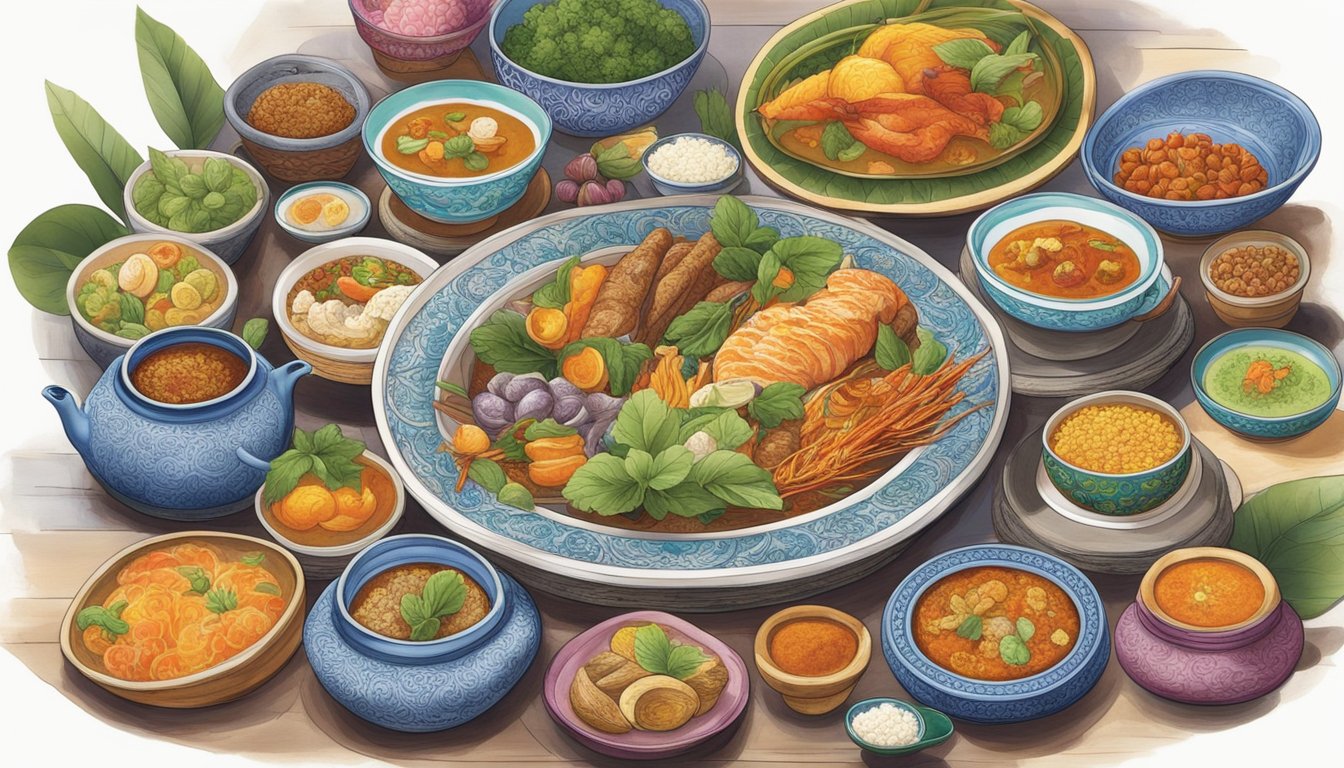
If you’re looking for a unique culinary experience, look no further than Peranakan cuisine. This blend of Chinese, Malay, and other Southeast Asian influences is sure to excite your taste buds and leave you wanting more.
Nyonya Delicacies and Culinary Art
One of the highlights of Peranakan cuisine is the Nyonya delicacies. These dishes are a fusion of Chinese and Malay flavours, with a touch of creativity and culinary art. Nyonya cuisine is known for its bold and complex flavours, with a balance of sweet, sour, salty, and spicy tastes.
Some of the most popular Nyonya dishes include:
- Ayam Buah Keluak: a chicken dish cooked with black nuts that have a unique and rich flavour.
- Laksa: a spicy noodle soup that is a staple in Peranakan cuisine.
- Kueh Pie Tee: a crispy pastry filled with vegetables, prawns, and a sweet and sour sauce.
- Babi Pongteh: a pork stew made with fermented soybean paste and potatoes.
In Nyonya cuisine, presentation is just as important as taste. The dishes are often beautifully arranged with vibrant colours and intricate designs. It’s a feast for the eyes as well as the taste buds.
Peranakan cuisine is steeped in tradition, with recipes passed down from generation to generation. The use of fresh herbs and spices, such as lemongrass, turmeric, and galangal, is a hallmark of this cuisine.
If you’re looking to explore the culinary traditions of Southeast Asia, Peranakan cuisine is a must-try. With its unique blend of Chinese, Malay, and other influences, it’s a feast for the senses that you won’t soon forget.
Connectivity and Accessibility

If you’re planning to visit the Peranakan Museum in Singapore, you’ll be pleased to know that it’s easily accessible by car and public transport. The museum is located in the heart of the city, making it convenient for tourists and locals alike.
By Car
If you’re driving, there are several parking options available near the museum. The nearest car park is the National Museum of Singapore car park, which is just a short walk away. Alternatively, you can park at the nearby Fort Canning car park and take a leisurely stroll through Fort Canning Park to reach the museum.
By Public Transport
If you’re taking public transport, the museum is easily accessible by MRT and bus. The nearest MRT station is Bras Basah MRT station, which is just a 5-minute walk away. From there, you can take a leisurely stroll through the historic Bras Basah.Bugis precinct to reach the museum.
Alternatively, you can take bus services 7, 14, 14e, 16, 36, 77, 106, 111, 124, 128, 131, 147, 162, 162M, 166, 174, 174e, 175, 190, 502, 502A, 518, 518A, 700, 700A, NR7, and NR6, which all stop near the museum.
Collaborations and Partnerships
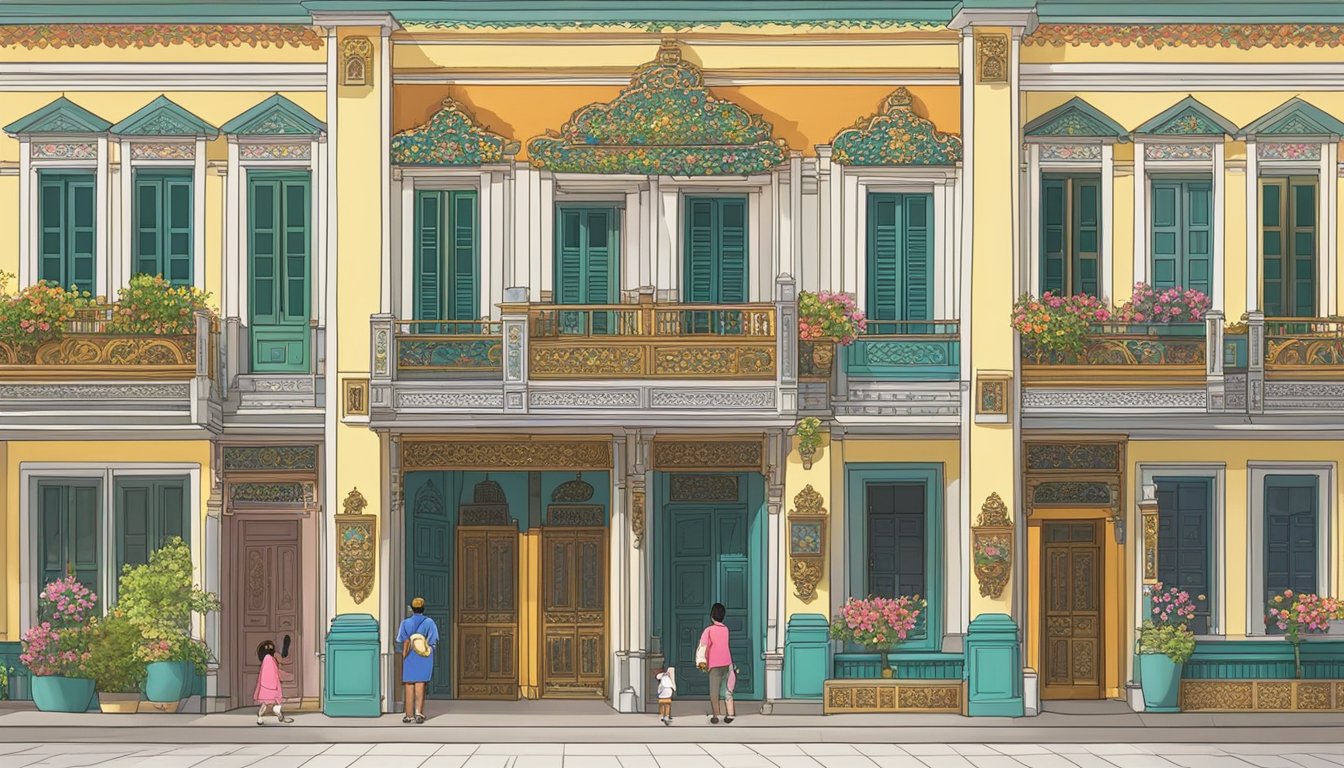
As one of the top museums in Singapore, the Peranakan Museum is excited to collaborate with various associations and organizations to bring you unique and exciting exhibitions. Through these collaborations, you can explore the rich culture and heritage of the Peranakan community.
One of the museum’s notable partnerships is with the Katong Antique House. This collaboration allows visitors to experience the unique architecture and interior design of a traditional Peranakan home. The museum also works closely with the Penang and Malacca Peranakan Associations to showcase the diverse Peranakan culture across Southeast Asia.
In addition to these collaborations, the Peranakan Museum also partners with other museums and cultural institutions to bring you a wide range of exhibitions. For example, the museum has previously collaborated with the Asian Civilisations Museum and the National Museum of Singapore to bring you exhibitions that showcase the rich history and culture of the Peranakan community.
Through these partnerships and collaborations, the Peranakan Museum is able to offer visitors a unique and exciting experience that celebrates the rich culture and heritage of the Peranakan community. Whether you are a history buff or simply interested in learning more about the Peranakan culture, the museum’s exhibitions are sure to captivate and inspire you.
Visitor Information and Services
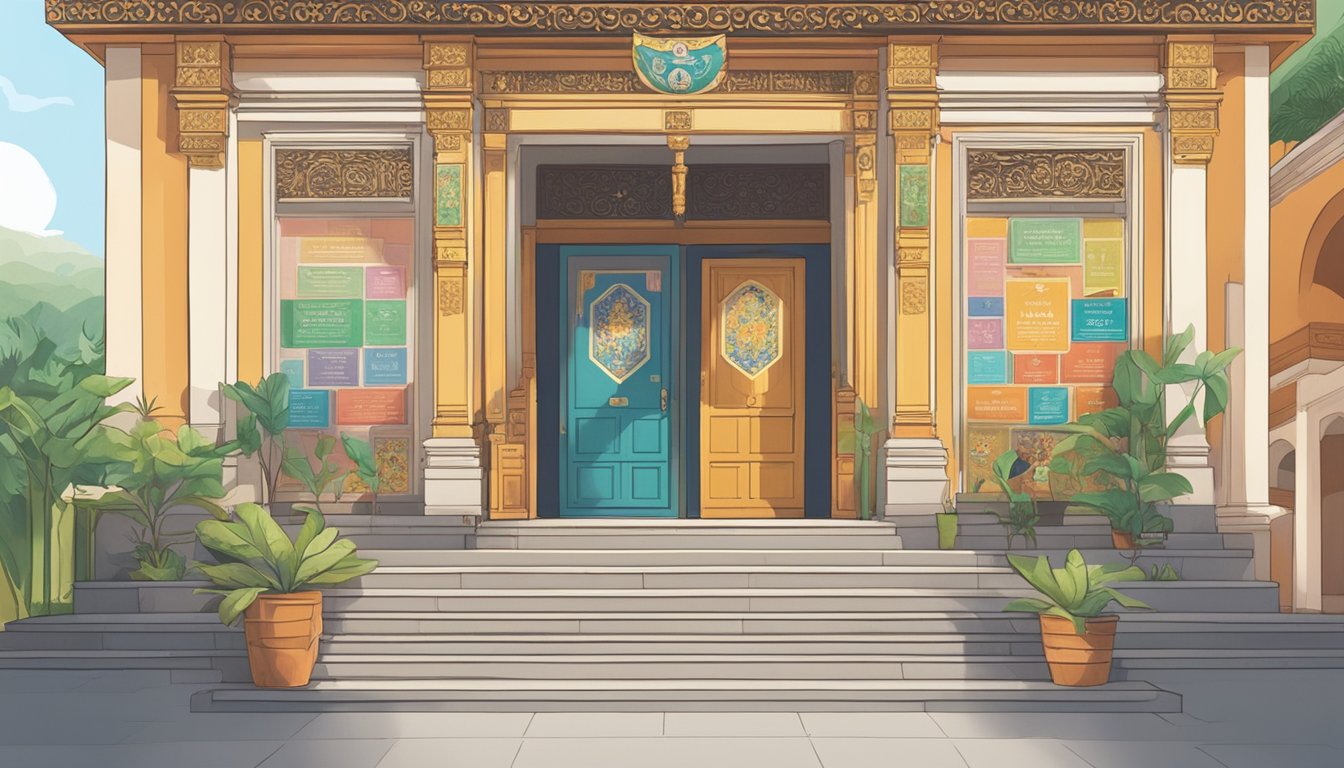
If you’re planning a visit to the Peranakan Museum in Singapore, you’re in for a treat. This museum is dedicated to showcasing the unique culture and history of the Peranakan people, who are descendants of Chinese immigrants who settled in the Malay Archipelago.
Before you head out to the museum, it’s important to know a few things about visitor information and services. First of all, the museum is open from 10 am to 7 pm daily, except for Fridays when it stays open until 9 pm. Admission to the museum is $10 for adults, $8 for senior citizens, and $5 for students.
To make the most of your visit, you can take a guided tour of the museum. These tours are led by knowledgeable guides who can provide you with in-depth information about the exhibits. Guided tours are available in English and Mandarin, and they cost $20 per person.
If you’re hungry or thirsty during your visit, you can stop by the museum cafe. Here you can enjoy a range of snacks and drinks, including traditional Peranakan dishes. The cafe is open from 10 am to 7 pm daily, and it’s a great place to take a break and recharge before continuing your exploration of the museum.
Finally, if you’re interested in taking home a souvenir of your visit, you can stop by the museum shop. Here you’ll find a range of Peranakan-inspired gifts and souvenirs, including jewellery, textiles, and pottery. The shop is open from 10 am to 7 pm daily and is a great place to pick up a unique and memorable memento of your visit to this exciting museum.
Frequently Asked Questions
What enthralling exhibits can one expect to see at the Peranakan Museum?
The Peranakan Museum is home to a vast collection of artefacts and exhibits that showcase the unique culture and heritage of the Peranakan community. You can expect to see beautiful textiles, ceramics, jewellery, furniture, and other decorative objects that reflect the Peranakan’s fusion of Chinese, Malay, and other cultures. Some of the most fascinating exhibits include the Peranakan Wedding Bed, the Nyonya Kebaya Gallery, and the Peranakan Chinese Porcelain Gallery.
Are there any delightful culinary experiences available near the Peranakan Museum?
Yes, there are plenty of delightful culinary experiences available near the Peranakan Museum. You can explore the vibrant Joo Chiat neighbourhood, which is known for its delicious Peranakan cuisine. Some popular dishes to try include laksa, ayam buah keluak, and kueh pie tee. You can also visit the nearby Katong neighbourhood, which is home to many charming cafes and restaurants.
Can visitors organise a vibrant photoshoot at the Peranakan Museum?
Yes, visitors can organise a vibrant photoshoot at the Peranakan Museum. The museum’s beautiful architecture and colourful exhibits make for a stunning backdrop for photos. However, it’s important to note that photography is not allowed in certain areas of the museum, so be sure to check with the staff before taking any photos.
What are the current admission charges to experience the Peranakan Museum?
The current admission charges to experience the Peranakan Museum are £10 for adults, £5 for students and seniors, and free for children under 6 years old. However, admission charges may vary for special exhibitions and events, so be sure to check the museum’s website for the latest information.
Could you guide me on the best way to travel to the Peranakan Museum?
The best way to travel to the Peranakan Museum is by public transport. The nearest MRT station is Bras Basah, which is just a short walk away from the museum. You can also take a bus or a taxi to the museum. If you’re driving, there is limited parking available at the museum, so it’s best to park at a nearby car park.
What sort of charming souvenirs can one find at the Peranakan Museum store?
The Peranakan Museum store offers a wide range of charming souvenirs that make for great gifts or mementoes of your visit. You can find beautiful Peranakan-inspired jewellery, textiles, ceramics, and other decorative objects. Some popular items include beaded slippers, batik scarves, and Peranakan-inspired tea sets.
Applying for Loans Just Got Easier with Quick Credit
Do rising expenses leave you feeling strapped? Perhaps you dream of a getaway or the latest tech. Whatever your reason, a personal loan can bridge the gap.
Quick Credit, a trusted Jurong moneylender, offers a streamlined solution. Their online application takes mere minutes, eliminating the hassle of traditional loans.
Say goodbye to unexpected bill stress. Take control of your finances today.
Click here to start your Quick Credit application and achieve financial peace of mind.
